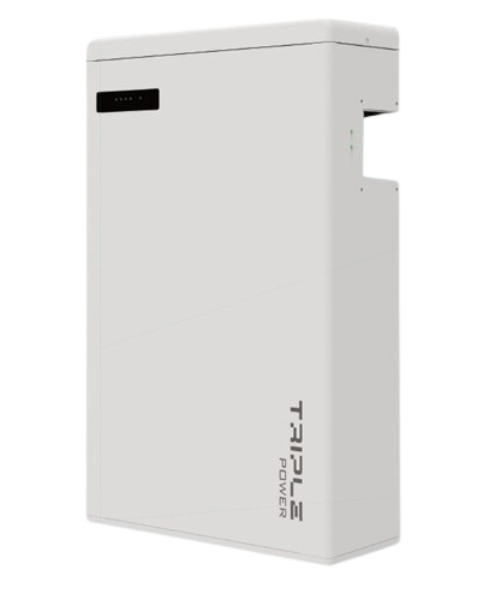In a world where solar energy is growing with a brisk step, deciding which storage technology for photovoltaic systems is best suited to your needs can seem like a daunting task. Don't be afraid! Today we will take you on an exciting journey through the different solar energy storage solutions, analysing their advantages and disadvantages to help you make the right choice.
Have you ever wondered how lithium batteries, lead-acid batteries and flow batteries compare to each other? Or perhaps which is the best way to integrate solar energy with the electricity grid? Here is the complete overview and comparison you have always wanted.
In this article, we will unveil the key features and performance of each storage technology, allowing you to understand which is the most suitable solution for maximum performance and energy efficiency. Don't wait any longer! Dive into this sea of knowledge and discover how to get the most out of your photovoltaic installation, making the most of the energy produced by the sun and reducing your dependence on the electricity grid.
Whether you are a home user or an business owner, this information will make all the difference to your energy savings and environmental sustainability. Get ready to discover the future of solar energy and take an well-informed decision on the energy storage best suited to your needs.
Popular storage technologies: lithium-ion and lead-acid batteries

Lithium-ion batteries are currently one of the most popular solutions in the field of energy storage, particularly for photovoltaic systems. This popularity is mainly due to: their high energy density, which allows a large amount of energy to be stored in a small space; their long service life, which ensures constant efficiency over time; and their low maintenance, which means fewer costs and interventions over the years.
However, they are not free from disadvantages, such as their rather high initial cost and a certain sensibility to extreme temperatures, especially when it comes to high temperatures, which can negatively affect the performance and lifetime of the batteries themselves.
On the other hand, lead-acid batteries are a more economically accessible solution, also having an enduring tradition in the solar energy sector. Although these batteries are characterised by a lower energy density than lithium-ion batteries, and are therefore characterised by a reduced energy storage capacity, and by an overall shorter service life, they are a safe and reliable alternative for those looking for a more cost-effective solution.
When comparing the two technologies, lithium-ion batteries are characterised by higher efficiency and energy efficiency, as well as a longer lifetime, thus ensuring a more profitable investment in the long run. However, the higher initial cost may be a barrier for some users, who may therefore turn to lead-acid batteries as a cheaper and still reliable solution.
Flow batteries: an alternative solution
Flow batteries are an interesting alternative to more traditional technologies. They work by storing energy in electrolyte liquids and are characterised by their ability to rapidly discharge and charge.
There are different types of flow batteries, including vanadium and iron-chromium batteries.
The advantages of flow batteries include long life, flexibility in storage capacity and inherent safety. However, they also have some limitations, such as system complexity, high initial cost and the need for adequate space for installation.
Integration with the electricity grid: self-consumption and back-up systems
Integration between photovoltaic systems and the electricity grid is essential to maximise the use of the energy produced and reduce dependence on the grid. Self-consumption, or the direct use of the energy produced by the system, reduces energy costs and increases energy independence. Back-up systems, on the other hand, ensure energy continuity in the event of grid outages.
These systems may consist of storage batteries or fuel-fired generators, and ensure that energy is always available when needed, increasing the resilience of the home or firm.
Environmental sustainability and energy saving: the right choice for the future
Choosing the right energy storage technology is also crucial from the point of view of environmental sustainability and energy savings. Each technology has a different environmental impact, both in terms of production and disposal, and in terms of lifetime efficiency.
Lithium batteries, for example, have higher energy efficiency and lower capacity loss over time than lead-acid batteries, but their production and disposal can have a greater environmental impact.
Flow batteries, on the other hand, are considered more environmentally friendly due to their long service life and the possibility of recycling electrolyte liquids. Choosing the right storage technology for your needs can have a significant impact on energy savings and, consequently, on cost reduction and environmental impact. It is therefore crucial to carefully evaluate the different options available in order to make an informed and sustainable choice.
In this article, we have explored the main energy storage technologies for photovoltaic systems, comparing lithium-ion, lead-acid and flow batteries, and discussed the importance of grid integration and environmental sustainability when choosing the most suitable solution. Each technology has specific advantages and disadvantages, and it is crucial to carefully assess your needs, budget and desired environmental impact before making a decision.
We hope that the information provided in this article will help you make the right choice for your photovoltaic system and enable you to make the most of solar energy, reducing your dependence on the electricity grid and contributing to a more sustainable future.

